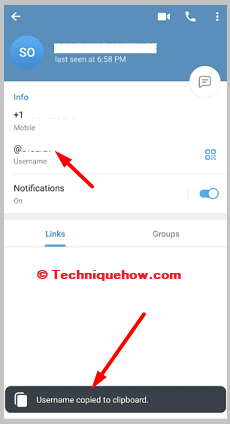If you are using Telegram, there are some copycat channels that mimic big brands, offer job scams, and false crypto “investment” traps. These fake users operate clever tactics to trick people into handing over money, personal details, or account access.
Fake accounts can look surprisingly real as they borrow logos, use stock images, and copy usernames that differ by just a single character. Many even send unsolicited messages pretending to be customer support or a trusted friend.
The good news is that you can protect yourself by learning how to spot them using a few signs.
This guide breaks down the most common Telegram scams, the red flags of fake accounts, and the exact steps you can take if you ever run into one.
Contents
What are Some of the Most Common Telegram Scams?
Telegram may be one of the most popular messaging apps, but it’s also a seedbed for scams. The criminals use the platform’s privacy features to hide their identities while tricking people into giving up money or personal details.
Here are the most common scams you may face on Telegram and how to spot them before it’s too late.
1. Fake Telegram Channels & Groups
One of the oldest tricks on Telegram is, scammers setting up lookalike channels for popular brands, influencers, or crypto projects.
They copy logos and styles so everything feels legit, then push shady links or fake giveaways that install malware or steal your info. A client of ours mistakenly joined a “Nike sneakers giveaway” group and almost handed over his card for “shipping fees”.
We also have a tool that analyzes channels and assigns a trust score based on subscriber counts, activity patterns, and message history. It flags 🟥 (sometimes even if it is real) suspiciously new or bot-driven channels on the basis of their activities.
Still, you should run a quick manual check: confirm the blue verification badge(on Channel) when present, closely inspect the username for subtle typos or extra characters, scan recent posts for authentic interaction (not just reposts), and avoid clicking links or responding to DMs from channel admins until you’re confident.
2. Tech Support & Impersonation Traps
There are sometimes scammers who often jump into chats pretending to be official support reps. Let’s say you’re complaining about your bank’s app crashing on a Telegram group, and suddenly someone DMs you claiming to be “Customer Support”. They’ll ask for login details or try to get you to install “remote assistance” tools that give them full control of your phone.
You should know that no real company handles customer service through random Telegram DMs. If in doubt, go to the official website.
3. Romance & Emotional Scams
Scammers play the long game here. They’ll meet you on a dating app or social site, then quickly move the chat to Telegram. Once there, they build trust and eventually ask for money, a medical emergency, or something else before a meetup.
I’ve heard horror stories where someone sent thousands, only to get ghosted. The dead giveaway? They always have an excuse why they can’t video call or meet in person. If “love” comes with constant cash requests, you’re not talking to a soulmate—you’re dealing with a scammer.
4. Job & Work-From-Home Schemes
In this way, the scammers target job seekers with Telegram postings that sound too good to be true and a big paychecks for minimal work, “exclusive” remote gigs, or fast-hire roles.
Before you can “start,” they’ll demand personal info like your Social Security number or request payment for equipment and training materials. A college friend nearly sent $200 for a “work kit” before realizing the company had zero online presence.
📌 Remember
Real employers don’t charge you to get hired, and any recruiter pushing you to chat only on Telegram is a flashing red warning sign.
5. Cryptocurrency Investment
On Telegram, fraudsters pose as traders or financial experts, offering “guaranteed returns” if you just send money to a special wallet. Sometimes they’ll show fake dashboards with skyrocketing balances to build trust, but when you try to cash out, they vanish.
Pump-and-dump groups are another angle; there, admins hype a random coin, convincing members to buy, then sell off their own stash while prices crash. I’ve seen people lose five figures in minutes. You should always remember that legit investing never comes with promises of “risk-free profits” and if it sounds magical, it’s a trap.
6. Giveaway & Classified Ad Scams
Who doesn’t love freebies? Scammers count on that. They run fake giveaways or post shady ads for sneakers, gadgets, or cars at unreal prices, and ask you to contact them on Telegram. Once there, they’ll push you to fill out surveys, hand over your details, or prepay to “secure” the deal. One example: someone who wired money for a “discount MacBook” listed on Facebook Marketplace that moved over to Telegram, and the seller vanished instantly.
Lesson 🙂
Free prizes usually aren’t free, and deals that sound impossible almost always are.
7. Friend-in-Need & Urgent Money Requests
This one hits people hardest; scammers comb your social media, then impersonate a close friend or family member on Telegram. They’ll message in a panic: “I lost my wallet—can you send $300 ASAP?” There are stories that a scammer posed as a soldier “stationed overseas” and fooled a woman into sending money repeatedly.
The safest move? Call or text the actual person through a number you already know. If someone suddenly reaches out on Telegram begging for fast cash, it’s 99% a scammer wearing your friend’s face.
How To Identify A Fake Telegram Account:
Telegram’s open nature makes it easy to connect with people worldwide, but it also creates plenty of room for fake accounts. The fake users set up these profiles to trick users into handing over money, personal details, or access to their devices, and knowing the warning signs can help you spot impostors before they do any damage.
1. No Badge and Shady Identity Clues
A quick way to spot a fake Telegram account is by looking for that little blue checkmark. The verified accounts for major companies, celebrities, or influencers will always have it. If someone claims to be “official” but has no badge, you should immediately raise an eyebrow.

Scammers often push the limits by creating usernames that look almost identical to the real and wapping an “O” for a zero, slipping in extra underscores, or making tiny spelling changes. They bank on the fact that most people skim usernames too quickly. Before you trust any account, slow down, read carefully, and cross-check it with the official website or social media links. Even a small mismatch is enough to tell that you’re probably dealing with an impersonator.
2. Thin or Generic Profile Details
A solid Telegram profile usually tells you something about the person or group behind it, whether it’s a detailed bio, a clear photo, or a posting history that shows activity.
Fake accounts rarely put in that effort; instead, you’ll often see a stock photo, an AI picture, or just a generic icon with no bio at all. If you click into their past posts and everything looks empty, vague, or copied, that’s a major red flag. These scammers like to keep things as barebones as possible so they can recycle the same fake account across multiple schemes.
Just compare that to genuine profiles, which usually have at least some trace of personality or consistency in their messaging. If it feels like no real person is behind the account, there probably isn’t.
3. Sudden or Unsolicited Direct Messages
One of the biggest giveaways of a scam is when someone random pops into your inbox out of nowhere. Maybe they say they’re from “support,” or maybe they act like an old friend who stumbled across your account.
Either way, the tactic is the same: build your trust quickly, then push you toward clicking a link, giving up personal info, or even sending money.
Real Telegram staff or the businesses will never message you first. It just doesn’t work that way. I know someone who nearly got tricked by a “bank rep” who messaged them after they asked a question in a crypto group. The scammer jumped in, acted professional, and almost convinced them to hand over login details.
Always remember that this type of unsolicited outreach is a major warning sign.
4. Urgency and High-Pressure Tactics
In this way, scammers tell you that your account is about to be shut down, or that you need to verify your details immediately to avoid losing access. Others might offer rewards, saying you’ll miss out on a giveaway or exclusive investment if you don’t act fast.
That “act now or else” language is designed to stop you from thinking clearly. Legitimate companies don’t operate that way, as they give proper notice, they don’t rush you, and they definitely don’t demand passwords or verification codes over chat.
If someone is creating a false sense of urgency and pushing you toward clicking a link or handing over sensitive information, step back. Just take a breath and verify through official channels before doing anything.
5. Strange Account Behavior and Bot Activity
A lot of fake Telegram accounts are run by bots or copy-paste scammers. They’ll recycle the same generic messages, respond instantly with canned replies, or avoid answering direct questions. Some even flood chats with suspicious links, hoping someone takes the bait.
On the flip side, they might have zero activity, no real conversations, no friends, no signs they’ve been around long. A brand-new account that suddenly contacts you is already suspicious, but pair that with robotic or off-topic responses and you’re definitely looking at a fake.
How to Report a Fake Account on Telegram:
If you have faced a suspicious or fake account on Telegram, don’t ignore it, as reporting helps protect you and other users. Telegram makes it simple to flag impostors, fake users, or abusive accounts directly through the app. By sending a report, you alert Telegram’s team to investigate and take action.
Here’s how you can quickly report a fake account:
Step 1: Open the Telegram app, open the person’s chat, go to the profile, and copy the username.

Step 2: Open your Gmail account and compose an email to [email protected], mentioning the username of the person and the reason why the account seems like a fake account.

Step 3: It will be easy for them if you add a screenshot that proves that the account is fake.
As Telegram doesn’t have a built-in “Report” button for every case, it offers a manual process where users can notify the support team about suspicious accounts.
What to Do If I Accidentally Interacted with A Fake Telegram Account?
If you’ve already chatted with a fake Telegram account, just stop responding, block the account, and avoid clicking any links they sent. If you shared personal details like bank info or passwords, immediately change those credentials and notify your bank or provider.
You should also enable two-step verification on Telegram to protect your account. Also, consider scanning your device for malware if you clicked on suspicious links. Finally, report the fake account to Telegram so others don’t fall for the same trick.
Frequently Asked Questions:
Yes. When you report a fake account, the person behind it won’t know who flagged them. Telegram handles reports privately, and your identity is never shared with the scammer or the reported account.
Not necessarily. Many real users create new accounts daily. What makes an account suspicious is the combination of being brand new, lacking profile details, and immediately messaging strangers with offers, links, or urgent requests.
Deleting messages is smart because it removes links or files you might accidentally click later. Even after blocking and reporting, clearing the chat history ensures you won’t revisit potentially harmful content by mistake.
You must check for the blue verification badge, review usernames carefully, and compare them with official websites or social media. Look for consistent posting history, authentic engagement, and avoid accounts that immediately push links, giveaways, or money requests.


